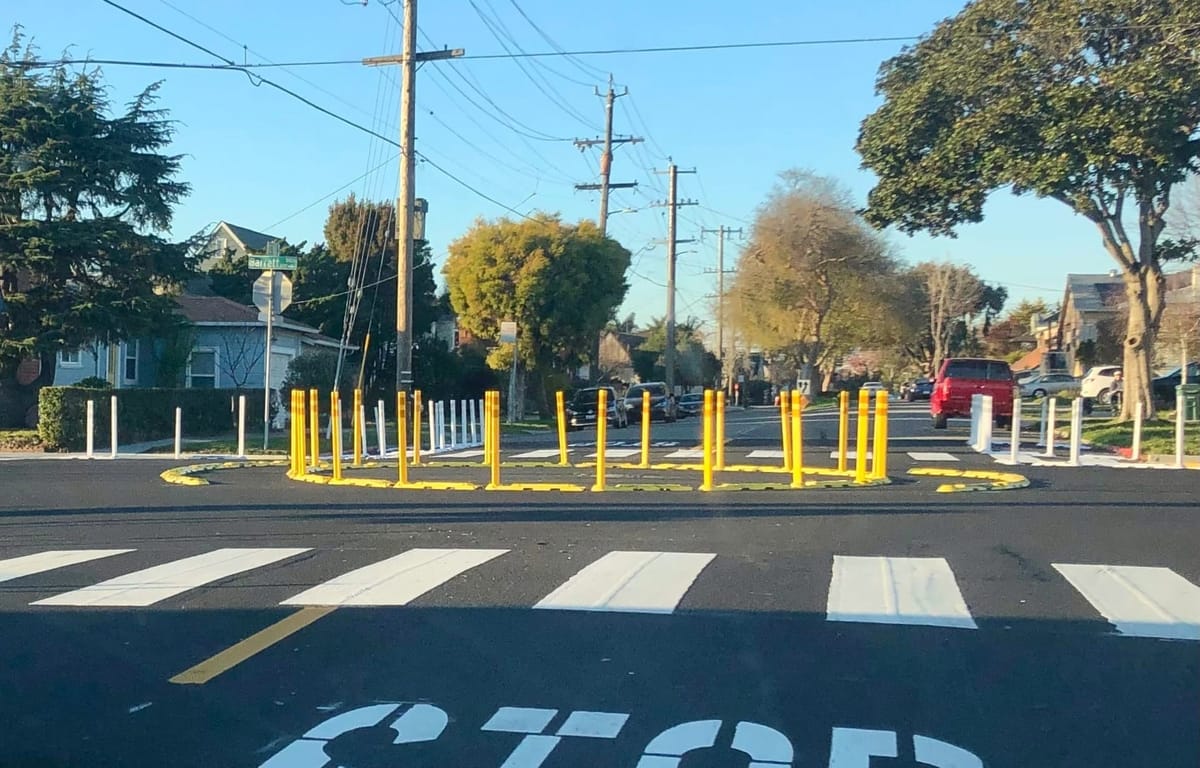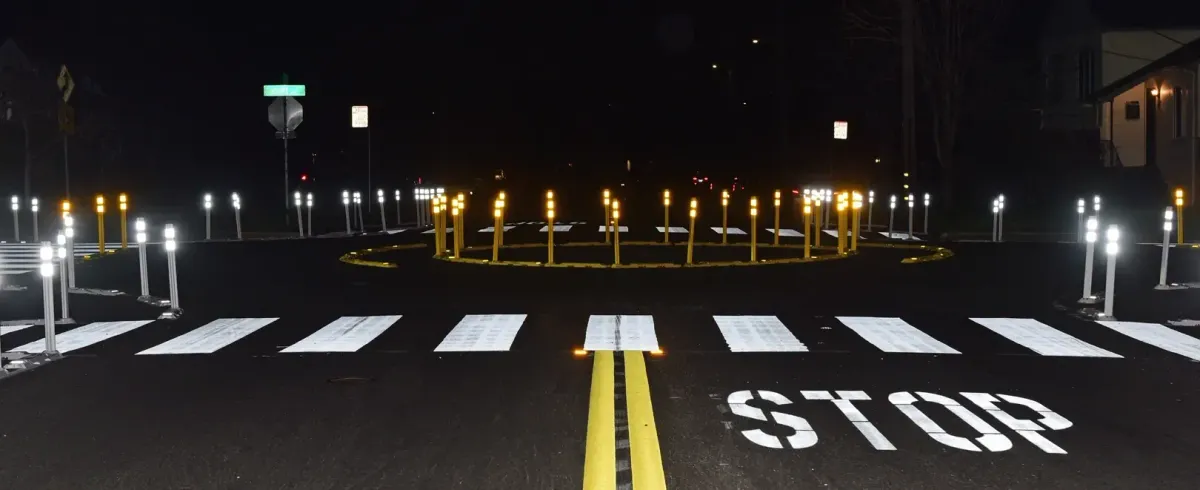

A traffic circle installed at the intersection of Barrett Avenue and Key Boulevard is earning cautious praise from Richmond residents and transportation officials, who say the quick-build project has succeeded in eliminating illegal sideshows but created new challenges for drivers, cyclists, and pedestrians.
The project is part of a $1.2 million traffic calming initiative the city launched to address reckless driving and improve safety at priority intersections. At a community meeting Wednesday night, city engineers and residents discussed the circle’s effectiveness and aired concerns about aesthetics, navigation, and long-term planning.
“We incorporated a road diet through this intersection in order to shorten the pedestrian crossings,” said Fehr & Peers Principal Robert Rees, who helped design the project. “We also wanted to preserve the ability for buses and fire trucks and ambulances to get through. We also wanted to slow the traffic going through the intersection. There was a lot of confusion there before.”
 Grandview IndependentSoren Hemmila
Grandview IndependentSoren Hemmila
According to officials, the intersection previously functioned as a four-way stop with four lanes of traffic and no crosswalks on side streets. The new design narrowed the roadway, added curb extensions, marked continental-style crosswalks, and installed a raised circular island at the center along with flexible vertical posts to reduce vehicle speed and eliminate space for stunt driving.
The improvements have made a visible impact, said several residents. “I think the roundabout is wonderful,” said Anita Parks, who lives mid-block on Key Boulevard. “I think the issue is not the roundabout, but the curb extensions. Large delivery trucks have to back up the entire block. It’s a tough turn, even for SUVs.”
Others echoed concerns about driver confusion and the visual clutter created by temporary materials. “People were not stopping at the four-way stop ahead of the build,” said Shelley Trask, who lives nearby. “Now, many are still not stopping. They view it as a traffic circle instead of a four-way stop and proceed before other cars have gone around the circle. I’ve yelled many, many times at people who have blown through the stop sign and nearly hit us.”
 Grandview IndependentSoren Hemmila
Grandview IndependentSoren Hemmila
Many residents and transportation advocates said the quick-build approach was a vital first step to address urgent safety concerns.
“Speaking for those who walk and bike, this is a much more inviting environment,” said Dani Lanis, chair of the Richmond Bicycle and Pedestrian Advisory Committee and advocacy manager at Bike East Bay. “The feeling and perception of safety is there. I think it’s important to prioritize safety. I had a family member who was hit and nearly killed. I would much rather keep our community alive now than wait for years to build something more aesthetic.”
Dylan, a resident who was previously struck by a car at the intersection, said the changes have made the area safer, despite visibility issues. “At night, you can’t see anything. The vertical posts make it hard to understand where you’re safe and where you’re not,” he said. “But slowing people down has helped. I actually think making it harder to drive through is a benefit.”
Public Works Director Daniel Chavarria said Barrett and Key was selected as a pilot site because of persistent sideshow activity and frequent complaints.
“This is something new. Barrett and Key is kind of like the high-profile location in Richmond,” Chavarria said. “This solution isn’t a one-size-fits-all. But being one of the first locations means we can learn from it and improve others.”
Chavarria said that the city has received more than 400 traffic calming requests from residents. The quick-build model allows Richmond to respond to more sites faster with limited resources.
“Let’s identify things that can improve what we already have and won’t break the bank,” he said. “We want to learn from this and apply it to other areas.”
City officials said feedback is being documented and used to evaluate near- and long-term adjustments. Some suggestions included clearer signage, removing excess posts, and improving aesthetics. Councilmember Claudia Jimenez emphasized the importance of continued community input.
“This is a quick-build, it gives us the opportunity to listen and make changes,” Jimenez said. “Let’s continue to have this engagement and take this as a pilot project to learn what works and apply it across Richmond.”
SUPPORT LOCAL JOURNALISM - SUBSCRIBE TODAY!
Grandview Independent needs your financial support to continue delivering the news that matters to our community. Quality journalism costs money, and we can't do it without readers like you.
SUBSCRIBE NOW and get:
• Unlimited access to all articles
• Newsletters with exclusive content
• The satisfaction of backing independent local news that serves your community
CLICK HERE TO SUBSCRIBE - Starting at just $10/month
FOLLOW US FOR BREAKING NEWS:
• Twitter: @GrandviewIndy
• Instagram: @GrandviewIndependent
• Facebook: @Grandview Independent
Copyright © 2025 Grandview Independent, all rights reserved.
